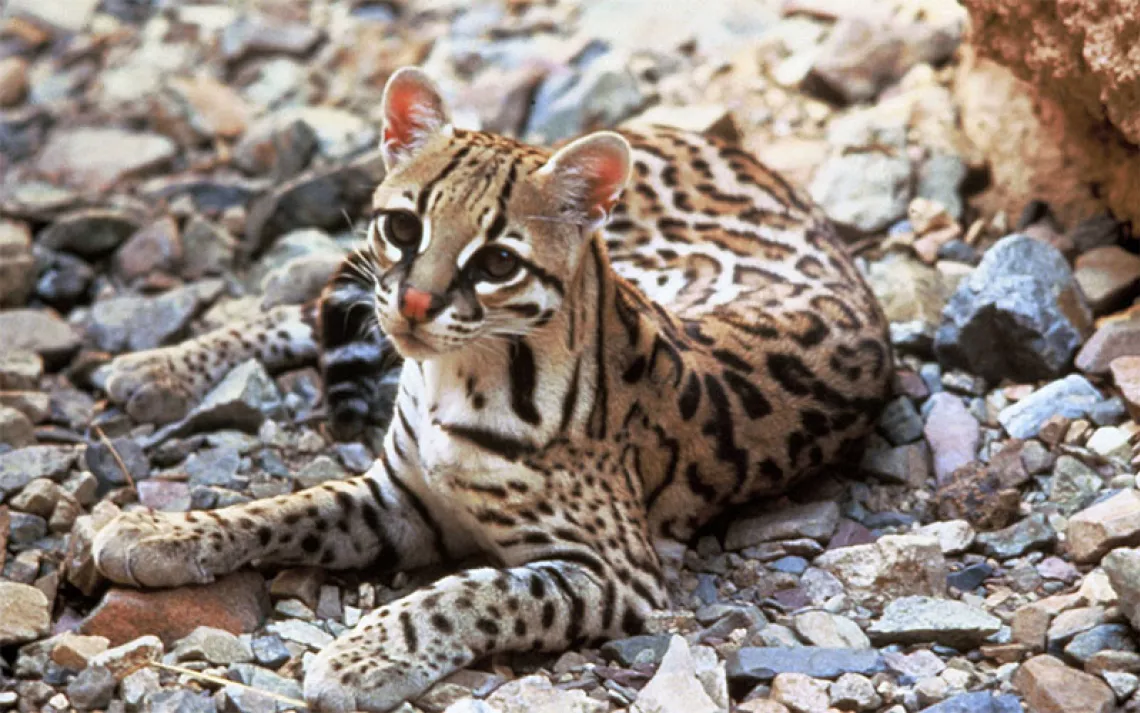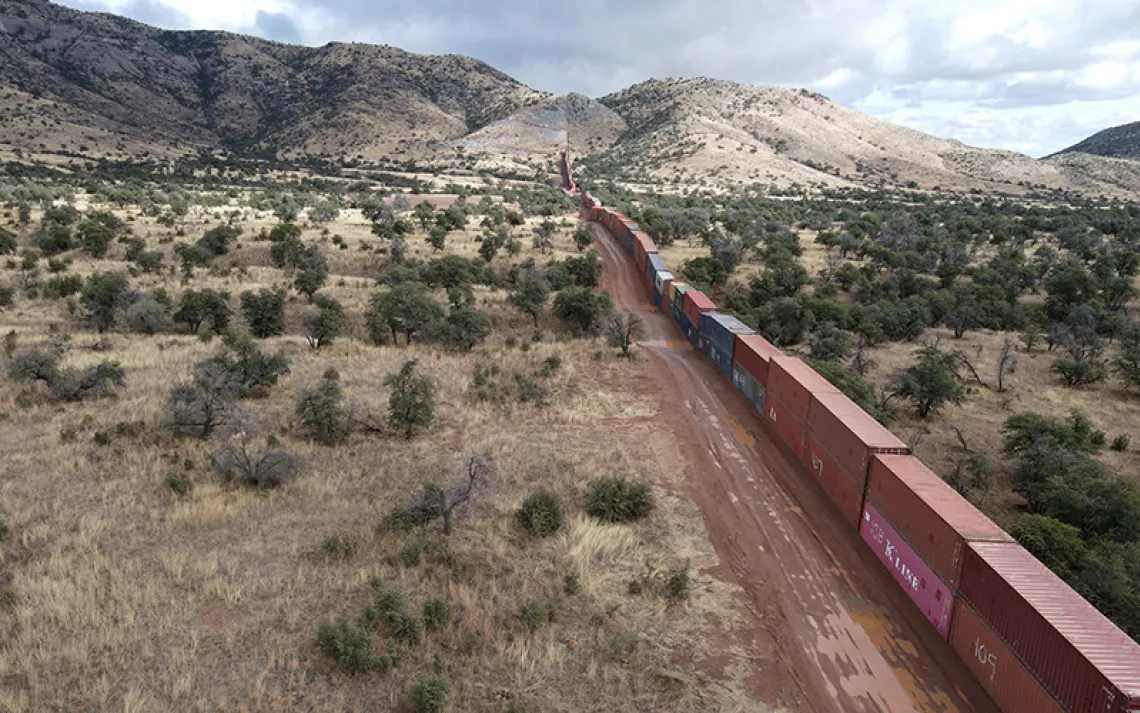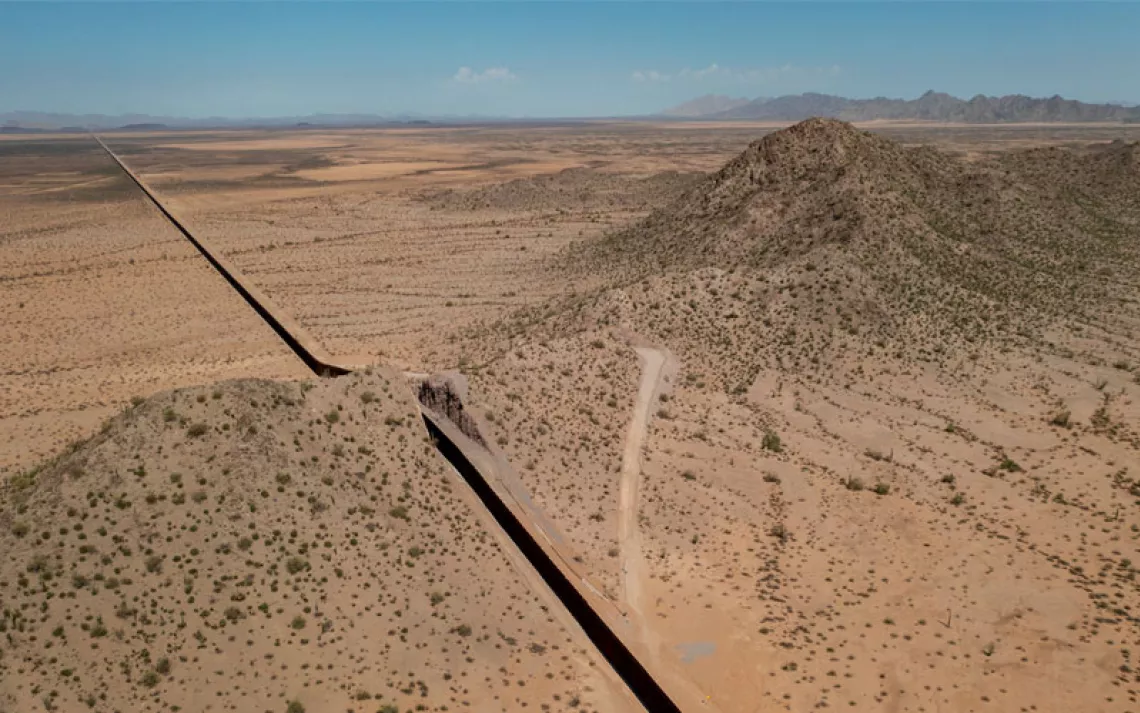Border Wall Opponents Stage Major Weekend Demonstrations
New details about Donald Trump’s promised wall galvanize protest
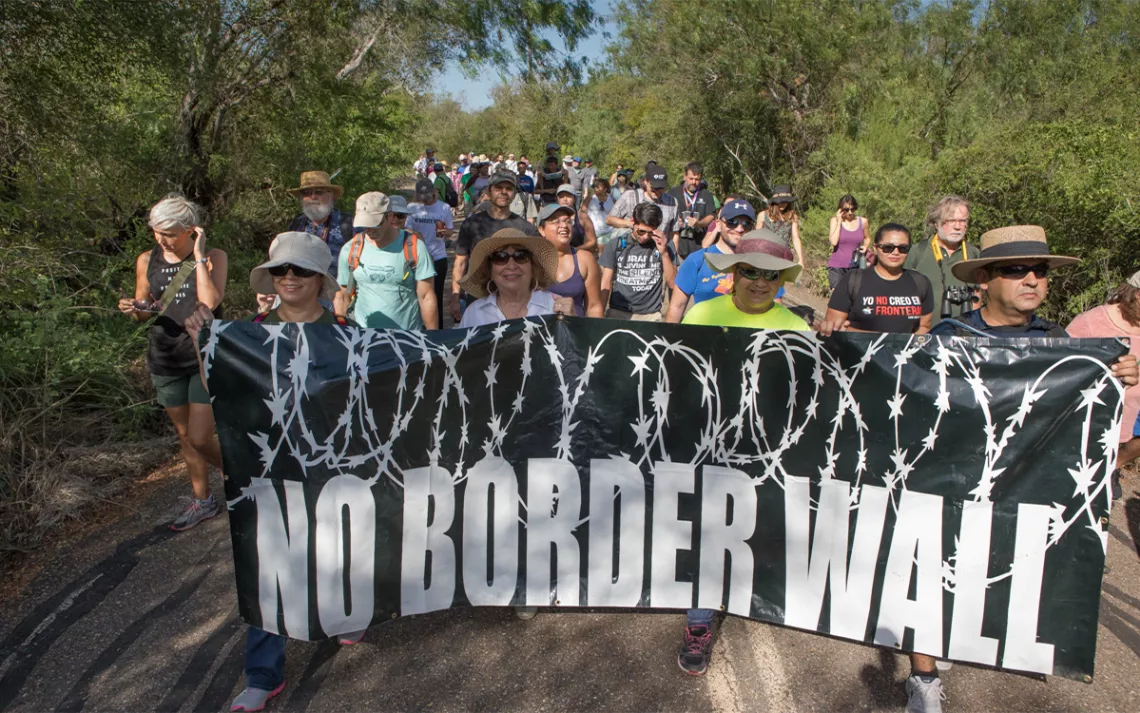
Photos by Krista Schlyer
A broad coalition of environmental and immigrant-rights organizations staged a weekend of protests in Texas’s Rio Grande Valley in response to recently released maps outlining planned border wall locations. Organizers believe the events represented the largest grassroots movement to date in opposition to one of President Trump’s most divisive policy priorities.
Over a thousand border residents gathered at a historic mission and a national wildlife refuge, both of which would be affected by the wall, to protest the potentially devastating effects of the proposed 18-to-30-foot-high barrier on wildlife habitat and local communities.
“We had more than 40 different organizations that were co-sponsors, with all kinds of concerns about the militarization of our border,” said Scott Nicol, co-chair of the Sierra Club’s Borderlands Team. “We have a common goal of stopping border walls, and we’re going to work together to make sure that happens.”
“This is clearly a local issue—people are being cut off from their river, and this chapel and nature preserve are being cut off—but it’s also an important national issue,” said Sierra Club president Loren Blackford, who attended both actions. “We’re talking about over $20 billion of U.S. taxpayer money being used in a wasteful, destructive manner when it could be used so much more effectively.”
On Saturday, demonstrators holding hand-stenciled signs with messages including “Save Our River” and “Protect Immigrant Families” marched in a four-mile procession from Our Lady of Guadalupe Catholic Church in downtown Mission to La Lomita Chapel. The century-old adobe mission, for which the city is named, sits 100 feet from the Rio Grande River, and just south of a flood-control levee that doubles as a Border Patrol access road.
If this fall the Senate approves the $1.6 billion in initial border wall funding passed by the U.S. House of Representatives in July, the resulting wall—built atop the current levee—would block access to the mission. That’s according to preliminary U.S. Customs and Border Protection maps that identify 74 miles of wall scheduled for construction, including 60 miles in the Rio Grande Valley, a region that stretches 150 miles upriver from the Gulf of Mexico.
Father Roy Snipes, a priest at Our Lady of Guadalupe for 25 years, led the procession at the wheel of a blue station wagon with a five-foot statue of the Virgin of Guadalupe mounted on the roof. In addition to being a historic site, the mission is used by his congregation throughout the year, including as part of a Palm Sunday service that ends in a picnic by the river. “We are a people of the river. It’s not just symbolic—this is where our sustenance comes from,” Snipes said. “But also, we’re the people of the chapel, and this is where our spiritual sustenance comes from.”
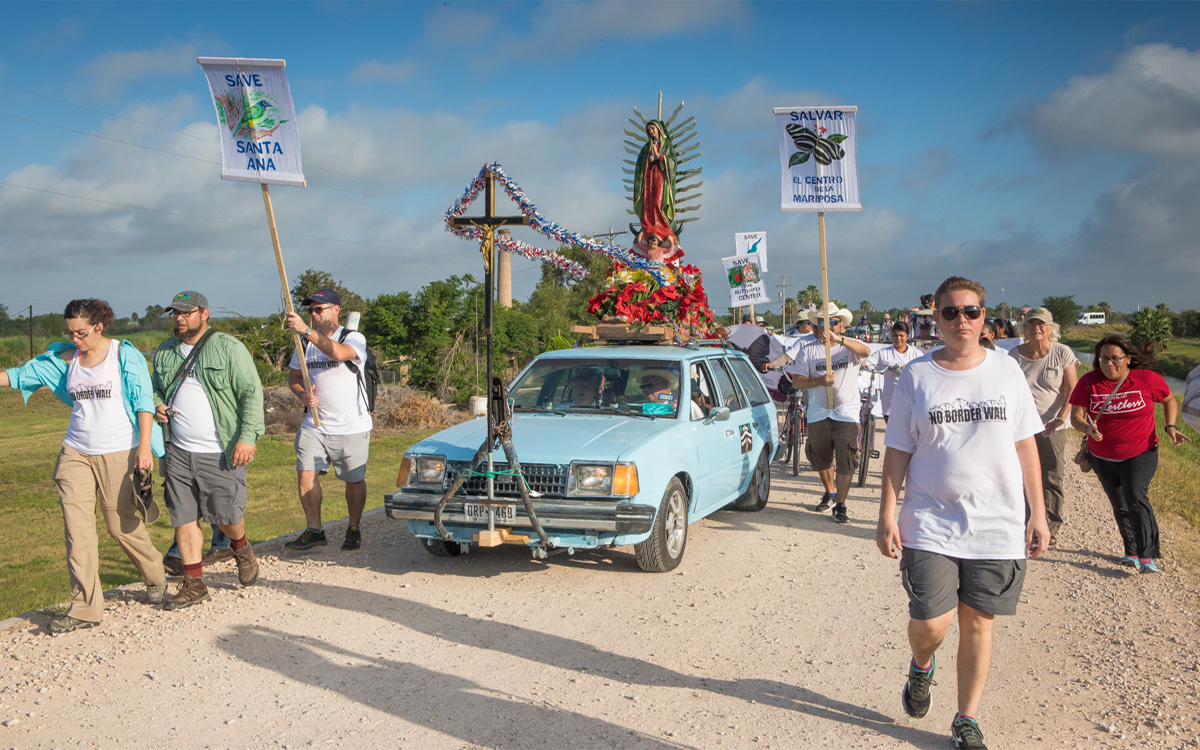
As the mission bell tolled, 750 demonstrators assembled under the shade of a large tent in triple-digit heat. After Father Roy ended a benediction by sprinkling holy water from the Rio Grande, speakers representing diverse organizations—including the Sierra Club, the Texas Civil Rights Project, the National Butterfly Center, and the Carrizo/Comecrudo Tribe—addressed the crowd.
“The wall is a monument to racism,” said Martha Sanchez, community organizing coordinator for La Unión del Pueblo Entero, an immigrant-rights organization. “It’s a slap in the face to people like us who live on the border, because they never ask us if this is what we need.”
“Building a wall between Mexico and the United States will put us on the wrong side of history,” Representative Vicente Gonzalez (D) said. “We should invest $1.6 billion to improve our school systems and preserve our wildlife refuges and our historic sites—not to construct an ignorant wall.”
The Saturday rally was followed the next day by a protest hike at the Santa Ana National Wildlife Refuge. Like the mission, nearly all of the refuge’s 2,088 acres are south of the proposed levee border wall. In addition to potentially cutting off access to one of the region’s most important tourist destinations, the wall would result in the clearing of up to 150 feet of native habitat on either side, limit the mobility of endangered animals like the ocelot, and trap wildlife in the event of a flood.
“We as birders are extremely concerned about this wall,” said Jeffrey Gordon, president of the American Birding Association. “People may not understand, but this is one of the prime birding hot spots in the entire country. What would history buffs think if they were going to put a wall across Gettysburg? What would sports fans think if they were going to wall off Fenway Park? It would be just a calamitous loss.”
Often referred to as the “jewel of the National Wildlife Refuge System,” Santa Ana is home to over 400 bird species—several dozen of which can’t be seen anywhere else in the United States—and 450 plant species, including a rare stand of threatened Sabal palm trees. With 165,000 annual visitors, the refuge is at the center of a more than $400-million-per-year eco-tourism industry in the Rio Grande Valley.
On a hot and clear Sunday morning, 650 hikers traversed brushland and old-growth forest hung with Spanish moss before gathering for a group photo beneath a 40-foot-high hawk observation tower. Later, they returned to the levee that bisects the refuge near the visitor center, holding hands in what organizers called a “human wall of solidarity.” As the line stretched for nearly a mile, a chachalaca—a chicken-size tropical bird found only in South Texas in the United States—flapped overhead.
“We just feel devastated at the thought of anything being cleared,” said Sarah Zepeda of Brownsville, who stood in the human wall with her husband and three-year-old son. Zepeda’s family visits Santa Ana at least once a month, but she worries they won’t be able to come long enough for her son to remember. She plans to continue protesting beyond the weekend. “We’ll be here all the way. When the trucks roll in, they’ll hear our voices.”
According to multiple media reports, construction in Santa Ana is scheduled to begin as early as November. Even if Congress rejects border wall funding, Customs and Border Protection says it will reallocate funds from elsewhere in its budget.
In that case, the wall within the refuge would stretch for 2.9 miles in the middle of a 10-mile gap in the existing barrier. “There’s no tactical reason for that,” said Stefanie Herweck, an executive committee member of the Lower Rio Grande Valley Sierra Club, and one of the principal organizers of the weekend events. “In our view, the reason for targeting a world-famous wildlife refuge like Santa Ana is to put an arrow in the heart of the opposition. They think if they put it here first, we’ll just go away.”
“We want people to realize that walls will do nothing to stop terrorism or smuggling, but what they will do is scar our communities and our natural areas,” Herweck said. “If these walls go up, they will be a deep wound that our community will have a lot of difficulty recovering from. For that reason, we’re going to fight really hard.”
 The Magazine of The Sierra Club
The Magazine of The Sierra Club
